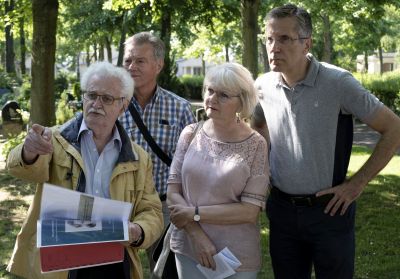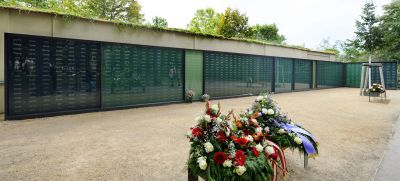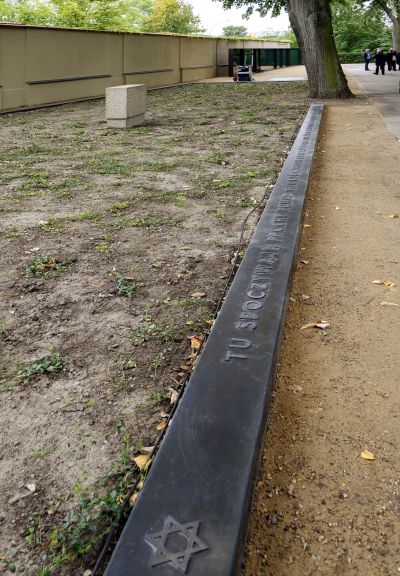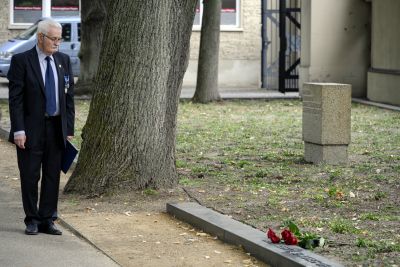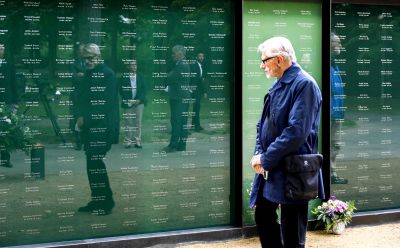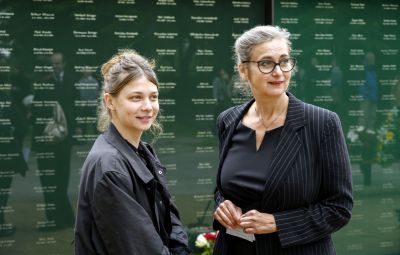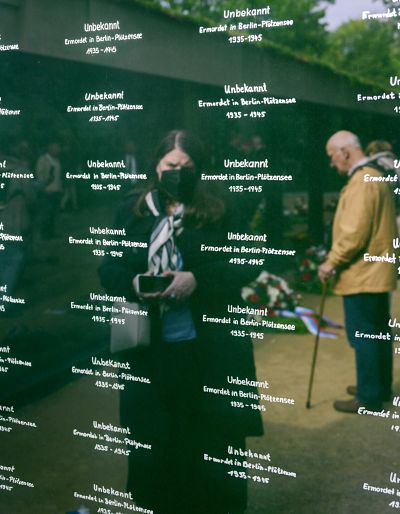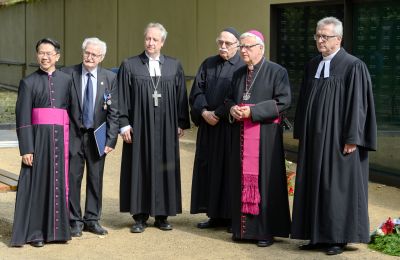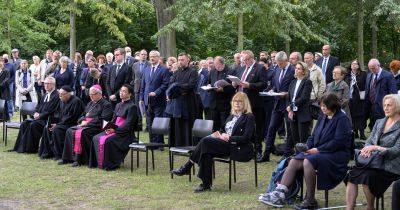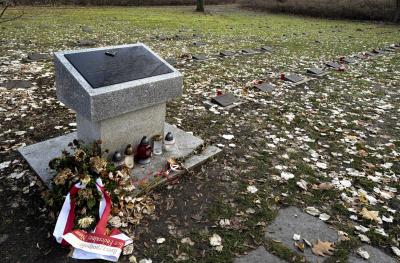REMEMBRANCE BEGINS COLLECTIVELY

As you approach the glass monolith, the writing gets even clearer. It is as unmistakable and as individual as the handwriting of the people who created it and as the fate of all those who stand behind the seemingly insignificant first names and surnames and their dates of birth and death. Suddenly, it becomes clear that this change to the “depth of focus” (sceptics would say that it’s more that the eye starts to accommodate) and the twofold and sometimes even threefold reflection and the coalescence of the vertical areas is no accident; it is exactly how the creators of the memorial intended it to be.
In the monochrome elements of the glass wall that only seem to be opaque, our silhouettes fade into the background behind the lettering of the names of those buried here. If we look through them, we recognise ourselves whilst the feeling creeps up on us that this mirrored chimera would start a dialogue with us, with us from the real world. The fates of those who were murdered, with their names that we do not know and that mean nothing to us, form the bridge of this dialogue.
All those who found their last resting place here are the essence of the dialogue, the link between the actors on both sides of the mirror. Their tragic fate should make us think or even provoke us into thinking. At the same time, we should not just think about who they were and why they had to die; establishing and continuing a dialogue between past and present also means initiating and developing projects that stimulate “remembrance” and “commemoration”.
Above all, what is thought-provoking is how it came to this tragedy and with whose consent it happened.
Perhaps these reflections or mirror images want to remind us that we are the only ones responsible for the freedom in which we live and for protecting it. It is not important whether we have fought for it ourselves or whether it was gifted to us.
At any rate, this is how I understand the intentions of the people who created this memorial.
***
Remembering my compatriots:
Our mantra is to eradicate National Socialism at his roots.
Our goal is to create a new world of peace and freedom.
(“Buchenwald Oath”, 19 April 1945)
***
We will probably never learn about the life stories of the victims buried here. So let us leave them captured between the layers of glass and, - just as the initiator of the project Klaus Leutner wanted it, -let them also be free because their identity and their human dignity have been restored.
This freedom has been gifted to them by the many volunteers who have assumed responsibility by placing their signatures on the glass memorial plate before which we stand. The lettering is as unique and unmistakable as the handwriting of those who wrote it; just like all those who were buried here.
I invite you all to visit the Altglienicke cemetery with this unique memorial.
Wojciech Drozdek, November 2021
A word from me: In my article “Saving them from being forgotten. The Altglienicke Cemetery in Berlin” [3], which I wrote in March 2020 for Porta Polonica, there was a mistake which I would like to correct. It reads: “In urns on a field of remembrance, the ashes of the various persons entered in the cemetery register for areas U1 and U2 may or may not be at rest there (...). The reason for this is easy to understand: In the crematoria in Berlin, as in Sachsenhausen concentration camp later on, several people were all cremated together in a furnace and their ashes were then put in a container.”
However, as Klaus Leutner correctly pointed out, this is not the whole truth. Unlike in the extermination camps that were run by the SS (including Sachsenhausen concentration camp), in the Berlin crematoria, the deceased were cremated individually.
